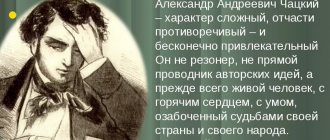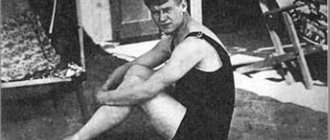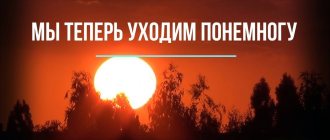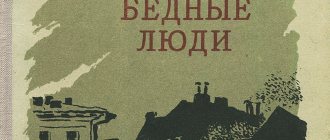Crossing characters with real people
Sergei Yesenin took all his characters from his own life experience. The prototype of Anna was Lydia Ivanovna Kashina. Other characters do not bear complete resemblance to real people. But these are all the characters of the poet’s fellow villagers. Although there is a lot in common between Pron Ogloblin and Pyotr Yakovlevich Mochalin. The two at one time were engaged in propaganda of Lenin’s ideas.
This is a wonderful poem, and its author is Yesenin. “Anna Snegina” is a summary of his own period of life.
History of creation
The poem “Anna Snegina” was written by Yesenin in January 1925, shortly before his death. At that time he was in the Caucasus and wrote a lot. The work, according to the author, was written easily and quickly, in one breath. Yesenin himself was extremely pleased with himself and considered the poem his best work. It reconsiders the events of the revolution, military actions, political events and their consequences for Russia.
The poem is deeply autobiographical, the prototype of Anna Snegina was the poet’s acquaintance Lydia Ivanovna Kashina, who married a nobleman, a White Guard officer, and became distant and a stranger. In their youth they were inseparable, and in adulthood Yesenin accidentally met Lydia, and this became the impetus for writing the poem.
Meaning of the name
is quite simple: the author chose a fictitious name with the meaning of pure, white snow, the image of which appears several times in the work: through delirium during illness, in the poet’s memories. Snegina remained pure, inaccessible and distant for the lyrical hero, which is why her image is so attractive and dear to him. Critics and the public received the poem coldly: it was unlike other works, political issues and bold images scared away friends from commenting and evaluating it. The poem is dedicated to Alexander Voronsky, a revolutionary and literary critic. It was published in full in 1925 in the magazine “Baku Worker”.
The personality of the author in the work
Melnik often calls the main character Sergusha, and yet there is no one hundred percent coincidence between the author and his character. According to Anna's description, the narrator's portrait is similar to the poet's appearance. But this cannot be said for sure. Nevertheless, an analysis of Yesenin’s poem (“Anna Snegina”) can be done based on the fact that the book is autobiographical.
Also, in one of the conversations, the main character says that his character is connected with the fact that he was born in the fall (Sergei Alexandrovich was born on October 3). According to the poem, he comes to the village of Radovo; in reality, in 1917-1918, Yesenin visited the village of Konstantinovo. Like his character, he is very tired of war events. I wanted to relax and calm my nerves, which is easiest to do away from the capital.
Even a brief summary of “Anna Snegina” shows how much the author put his own experiences into the poem.
Features of the structure of the poem
According to historical information, Sergei Yesenin finished the poem “Anna Snegina” shortly before his death. And I started it when I went on my second trip to the Caucasus. According to some reports, this place was of great importance for the poet. After all, it was there that Yesenin’s brightest creative period took place. He himself said that he writes with insane gusto, practically in one gulp, receiving unprecedented joy from the process itself. And this is felt when reading the poem. After all, it can be compared to a whole book containing two literary genres:
- the hero's love experiences - lyrics;
- events external to the hero - epic.
But that’s not the only thing that’s considered special. The poetic size of Yesenin’s poem “Anna Snegina” is also noteworthy. Indeed, in this work the poet uses the style loved by Nikolai Nekrasov. Namely, a three-foot amphibrach, in which the stress falls on the third syllable (“Selo, which means ours is RadOvo, dvorOv, honor, two hundred”...).
Many critics, including modern ones, note that in the work Yesenin was able to show the country’s transition from the Russian Empire to the Soviet Republic. And also the fate of the little man during the Civil War and the First World War.
In addition, it should be noted that the plot of Sergei Yesenin’s poem “Anna Snegina,” as is often noted in modern works, is based on real events. The village of Radovo is a prototype of the place where the poet himself lived. Therefore, its mention is of great importance for the creation of the so-called metaphorical space.
The poem being studied begins and ends the same way. In both cases, the story is about how the main character arrived in his native village. Thanks to this feature, the composition of the work has a cyclical structure.
The image of Anna Snegina
The image of the first love, Anna Snegina, is partially copied from a real woman named Lidia Ivanovna Kashina (lived 1886-1937). Before the revolution, she lived in the village of Konstantinovo (in the poem Radovo), where the poet is from and where the book hero came to hide from war tragedies. In 1917, her house became the property of the peasants, and Lydia Ivanovna moved to another estate. Yesenin often visited both his parents’ and other houses. But, most likely, there was no story at the gate with a girl in a white cape and a gentle “no”. Kashina had two children who loved Sergei very much. Her relationship with her own husband was not very close.
In 1918, Lydia moved to Moscow and worked in the capital as a stenographer. They also saw each other often in the city. Unlike Anna, Lydia did not move to London. The real Kashina is very different from the character invented by the poet, such as Anna Snegina. The analysis showed that there are many inconsistencies in the characteristics of these two figures. Nevertheless, the image of the main character came out mysterious and exciting.
Arrival in Radovo
From the first lines of the poem, the author introduces us to the atmosphere of the village of Radovo. According to him, the village would appeal to anyone looking for peace and comfort. Near the forests there is a lot of water, fields and pastures, and there are lands lined with poplars. In general, the peasants lived well, but the authorities increased taxes over time.
In the neighboring village, Kriushi, things were worse, so the residents cut down the forest near Radovo. The two sides met, with bloody consequences. Since then, problems began in the village.
The narrator hears such news on the way.
We learn that Yesenin, from whom the story comes, decides to forget all the hardships of the war when he arrives in the village. The summary of “Anna Snegina” is also the experiences of the narrator. He shares his thoughts about the absurdity of war and the unwillingness to fight for the merchants and nobles who remain in the rear. Yesenin chooses a different fate for himself and is ready for a different kind of courage. From now on he calls himself the first deserter.
After the author has paid the cab driver beyond the norm, he goes to the mill. There he is warmly greeted by the owner and his wife. From their conversation we learn that Sergei came for a year. Then he remembers the girl in a white cape who kindly told him “no” at the gate. This is how the first chapter of the poem ends.
Introducing the reader to Anna
The miller calls the hero Sergusha when he wakes him up for breakfast, and he himself says that he is going to the landowner Snegina. On the way, Yesenin admires the beauty of the April garden and, against his will, remembers the cripples of the war.
During breakfast, the author talks with the “old woman,” the wife of the miller, who is one of the characters in the poem “Anna Snegina.” The summary of her monologue is complaints about the troubles that came to them after the overthrow of tsarism. The woman also remembers a man named Pron Ogloblin. It was he who was the killer during the fight in the forest.
During the conversation, the narrator decides to visit Kriushi.
On the way he meets a miller. He says that when he shared his joy about the guest’s arrival, young, married Anna, the daughter of the owners, was delighted. She said that when the poet was young, he was in love with her. During this, the miller smiled slyly, but Yesenin is not offended by crafty words. Sergei thinks that it would be nice to have a little romance with a beautiful soldier.
The village of Kriushi greeted him with rotten houses. A dispute broke out nearby about new laws. Sergei greeted old friends and began to answer questions from the peasants that poured in from all sides. When asked: “Who is Lenin?” - answers: “He is you.”
Feelings of Anna and Sergei
The third chapter of the poem begins with the author feeling unwell. He was delirious for several days and understood little of what kind of guest the miller had gone for for him. When the hero woke up, he realized that the figure in a white dress was his old acquaintance. Further in the poem they remember the past days, there we learn their brief content. Anna Snegina had not been in his life since his youth. It was with her that he sat under the gate. The woman talks about how together they dreamed of glory, Yesenin achieved his goal, and Anna forgot about her dreams because of the young officer who became her husband.
The poet does not like thoughts about the past, but he does not dare to express his point of view on the chosen topic. Slowly, Anna begins to reproach him for drinking, which the whole country knows about, and asks what the reason is. Yesenin only makes jokes. Snegina asks if he loves someone, Sergei replies: “No.” They parted at dawn, when the feelings that raged there at the age of sixteen were renewed in the poet’s heart.
After some time, he receives a note from Ogloblin. He calls Yesenin to go with him to Anna and ask for land. He reluctantly agrees.
Some kind of grief happened in Anna’s house, what exactly is unknown to the poet. From the threshold Ogloblin asks for land. The demand for an allotment remains unanswered. Anna's mother thinks that the man has come to see her daughter and invites him. Yesenin enters the room. Anna Snegina mourns her husband, who died in the war, and reproaches the guest for cowardice. After such words, the poet decides to leave the woman alone with her grief and go to a tavern.
The narrator as a prototype of Sergei Yesenin
In Sergei Yesenin’s poem “Anna Snegina,” which we analyze in this article, there are only six heroes. The most important among them is the narrator, behind whose mask the poet himself is hidden. He comes from a peasant background and has excellent intelligence and insight. His story is a complete reflection of the life of Sergei Alexandrovich. He also rose from the bottom and became a famous literary figure. But it was a hard road. His character changed greatly, he lost all faith in the decent qualities of humanity and became a cynic. Therefore, in the first stages of communication with Anna, the narrator stays somewhat away from her, more reveling in the marvelous landscapes around and thoughts about the past.
What is happening in the country depresses the hero. He does not see any sense in the terrible bloodshed, he is angry because the rich live without knowing troubles and sit in safety, while people with less income - the people - go to their deaths (“The war has eaten away my whole soul. For someone else’s interest"). It is for this reason that Sergusha runs away to her native village, wanting to abstract from reality and immerse herself in thoughts and thoughts about the past. This is how Sergei Aleksandrovich Yesenin’s poem “Anna Snegina” begins.
It is also important to mention the following: critics and writers note that events in the country are perceived by the main character critically, with pain and indignation. And he would like to resist reality, to rebel, but fatigue, sadness and a certain fear still take their toll. Expressed in a desire to hide from senseless war and revolutionary confrontations, nostalgic about the past. And it seems that the narrator wants to understand the situation, contrasts, compares the past and present. But there is no strength to move on, and he remains with the past.
Separation of the main characters
In the fourth chapter, Yesenin tries to forget about Anna. But everything changes, and Ogloblin comes to power together with his lazy brother. They waste no time in describing the Snegins’ house, along with their property and livestock. The miller takes the mistresses of the house to live with him. The woman apologizes for her words. Ex-lovers talk a lot. Anna remembers the sunrise they saw when they were young. The next evening, the women headed in an unknown direction. Sergei also leaves to dispel sadness and sleep.
Letter of Hope
Next, the poem “Anna Snegina” tells about the six post-revolutionary years. A summary of subsequent events is as follows: the miller sends Yesenin a letter, where he reports that Ogloblin was shot by the Cossacks. His brother, meanwhile, was hiding in the straw. He sincerely asks Sergei to visit him. The poet agrees and sets off. He is greeted joyfully, as before.
An old friend gives him a letter with a London seal from Anna. She writes simply and ironically, but through the text the poet captures her feeling of love. Yesenin goes to bed and again looks, as he did so many years ago, at the gate where once a girl in a white cape said affectionately “no.” But this time Sergei Alexandrovich concludes that in those years we loved, but, it turns out, they loved us too.
Labutya as an example of the ambiguity of the revolution
This hero is an important participant in the story. Therefore, the summary of Yesenin’s poem “Anna Snegina” loses its special meaning without it. So, Labutya is Pron’s brother. But despite this, it is its complete opposite. After all, he is a coward, as evidenced by the episode of the shooting of Pron by the Bolsheviks, in which Labutya hides behind the hay.
He doesn’t care about the ideas of the revolution; moreover, he doesn’t share them. But the desire to get benefits and not miss out burns with fire in him. And this becomes obvious when the reader reaches the point in which Labutya rushes to describe Anna’s house and property as quickly as possible.
By contrasting Pron and Labuti, Yesenin wanted to demonstrate the ambiguity of the revolution. After all, different people took part in the ideological struggle, so the coup turned out to be diverse. And not specifically bad or good.
Themes of the work
The summary of “Anna Snegina,” which was outlined above, shows how clearly the author reflected the problems of the society of that time and his youthful experiences. At that time he was worried about the fate of Russia and its inhabitants.
The events in the work begin in 1917. The last, fifth chapter is dated 1923. A striking emphasis in the poem is the war between two villages, which is interpreted as civil. A parallel can be drawn between the Snegin estate and the government; this symbolizes the failure of tsarism.
And although in a letter to a friend Sergei Yesenin wrote that he was now experiencing a creative crisis, and his muse had left him, the work “Anna Snegina” can easily be considered one of the “pearls” of Russian literature.
Contents of the work being studied
There are five chapters in total in the poem. Each of them contains its own special stage in the formation of a new country:
- The first talks about the negative impact the First World War had on residents. After all, the whole country is forced to work just to feed the Russian army. Which is involved in an endless bloodbath. For this reason, the main character decided to desert from the front and rest a little.
- The second, in fact, is the author's commentary on the disasters that befell the country. In it, the main character remembers his youthful love, and later meets Anna Snegina, who is now the wife of another and spends the whole day talking with her.
- The third chapter of Sergei Yesenin’s poem “Anna Snegina” tells about the relationship of the main characters. Remembering the past, they realize that their sympathy is mutual. But the situation is significantly complicated by the news of the death of Snegina’s husband. She accuses the protagonist of cowardice, breaking off all relations with him. At the same time, a revolution is taking place in the country; ordinary people are eager to receive land for general use.
- In the fourth chapter, Anna and Sergusha finally make peace. The woman confesses her feelings to the main character. In the village, the transfer of noble property to the state is in full swing. Therefore, at the end of this part, the narrator leaves for St. Petersburg in order to find out the situation.
- The fifth chapter describes the end of the civil war. The country has become impoverished, crime is flourishing around, Sergusha returns to her native village, but does not find Anna. The main character still loves her, but Snegina emigrated to London, and Sergusha is unable to leave her country.
According to Sergei Alexandrovich’s friends, in his last years he began to reconsider his views on life and the situation in the country. He was tired of bohemian life, he was tired of rebelling, and that is why he went to the Caucasus to breathe in the “provincial” air. And this is felt when reading Yesenin’s work “Anna Snegina”. After all, the woman personifies the poet’s regret about the loss of his youth and symbolizes the desire to return to human values. But it appears like a mirage, and Sergei Alexandrovich’s melancholy is rather inappropriate. The country is falling apart, and nothing will be the same as before.







